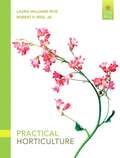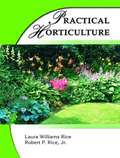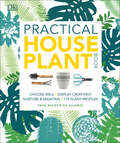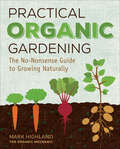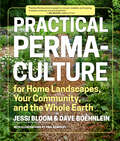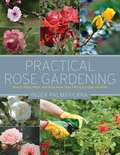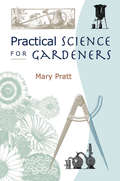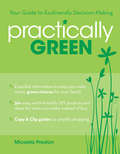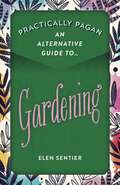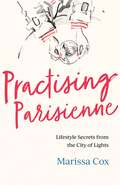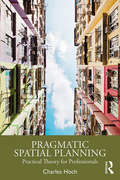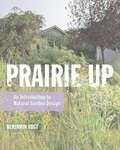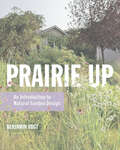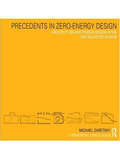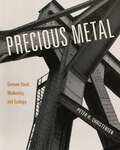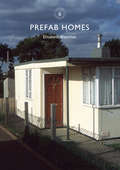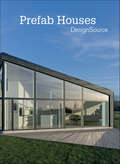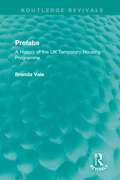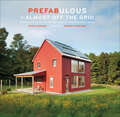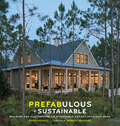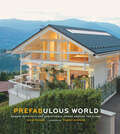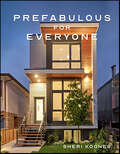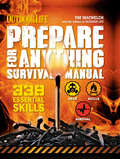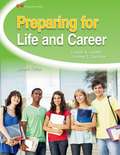- Table View
- List View
Practical Horticulture
by Robert Rice Laura RicePractical Horticulture, Seventh Edition, is a classic, scientifically oriented book for basic horticulture. It presents readers with the fundamentals of horticultural science and its applications in both the commercial and home sectors. Easy-to-read, the books’s ample illustrations, chapter objectives, and chapter-ending review questions, help readers learn the concepts. Some exciting new features to this edition include: Updated with timely coverage of hot environmental topics. The latest information on horticultural science for indoor and outdoor plants. A new chapter on careers in horticulture has been added. This is a great resource for anyone interested in horticulture!
Practical Horticulture (5th edition)
by Laura Williams Rice Robert P. RiceA textbook for a course in horticultural design for non-majors, and a reference for both amateur and professional ornamental gardeners. Explains the fundamentals of horticulture and techniques for growing plants inside and outside. Updated from the 1993 edition (first in 1986) with new photographs and bibliographical references, and new information on floral arrangements and pesticides. Annotation c. by Book News, Inc., Portland, Or.
Practical Houseplant Book
by Fran Bailey Zia AllawayTwelve inspiring projects, plus 200 in-depth plant profiles with detailed useful information and care instructions to help you cultivate and care for your houseplants.Learn how to choose which plants to use where, care for your houseplants to keep them healthy, and use plants to best effect in your home, with trusted advice, creative inspiration, strong visual aesthetic, and practical step-by-step detail. Two hundred plant profiles provide information and care instructions for a wide variety of plants, including ferns, orchids, and succulents, while a dozen step-by-step photographic projects offer exciting ideas for using plants to decorate your home or greenhouse--from eye-catching terrariums to a living succulent wall to a floating kokedama "string garden." With information on plant care, propagation, pests and diseases, pruning, and problem-solving, The Practical Houseplant Book is the essential guide for indoor gardeners.
Practical Organic Gardening: The No-Nonsense Guide to Growing Naturally
by Mark HighlandGet your hands dirty with this comprehensive guide to organic gardening that focuses on up-to-date techniques and high-quality visual information.Practical Organic Gardening sprouts homegrown, healthy edibles and other safe plants that are nourishing and tasty for your family, pets, and beneficial wildlife. Organic gardening isn’t just for environmentalists anymore. Over the last several years it has been a popular gardening method. Believe it or not, organic gardening has actually been around for most of the last century, but interest in organic gardening has soared in recent years as gardeners have become more aware of the quality of their food. Now is your chance to learn with this comprehensive book. Written by Mark Highland, founder of The Organic Mechanic, this is far from a hippie manifesto; it is a scientifically driven, modern-day dive into the organic methods, products, and practices that will appeal to any home gardener looking to make the transition from conventional to organic.
Practical Permaculture: for Home Landscapes, Your Community, and the Whole Earth
by Jessi Bloom Dave Boehnlein Mr Paul Kearsley“Practical Permaculture is powerful, visceral, readable, and inspiring. It shows us how we can and should live.” —Joel Salatin, farmer and author Jessi Bloom and Dave Boehnlein, two dynamic leaders in the permaculture community, offer authoritative, in-depth, hands-on advice that shares a holistic approach to sustainable living. Permaculture is a growing trend, but still a daunting concept to many. New to permaculture principles and techniques? The guesswork will be eliminated by paging through this invaluable resource. Already an expert? This guide will surely make an important addition to your sustainable agriculture reference shelf.
Practical Rose Gardening: How to Place, Plant, and Grow More Than Fifty Easy-Care Varieties
by Inger PalmstiernaIn Practical Rose Gardening, author Inger Palmstierna shares two of her special interests with us: modern roses, where the assortment is ever changing, and how one can use roses in a garden together with other plants. These are two fascinating areas she covers from top to bottom, so you can create a beautiful garden brimming with roses.Palmstierna begins by explaining the difference between a "modern rose" versus an "old-fashioned" variety. She then aids readers in selecting the right type of rose for their garden by providing detailed information on more than fifty popular rose varieties--pick your favorites by color or the type of environment in which each species thrives. Roses that grow as ground cover, for example, are easy to look after and are attractive on slopes and larger areas; roses that climb are perfect for a trellis or arch; and roses that grow as bushes are sturdy and can flower several times a season. And if you'd prefer to grow your roses in a pot on a balcony or terrace, you'll also learn how to care for them in winter!After you've learned which plants work best as companions to your roses, Palmstierna launches into the ever-important care of your roses, explaining the simplest ways to plant and prune. You'll also master how to buy and select the best plants from shops and garden centers and deal with common rose problems, including improving the soil and dealing with pests.Start growing your beautiful, thriving rose garden today!
Practical Science for Gardeners
by Mary PrattInformative and entertaining, this book will stimulate experimentation and encourage gardeners to review and improve their current gardening practices. Once gardeners learn how plants are constructed, it is easier to envision how they'll grow and flourish. An understanding of the structure behind good, healthy soil gives clues as to how to improve one's own garden tilth. This practical guide helps readers identify what plants need to survive and how these fundamental scientific facts are at the heart of good plant care. A chapter on seeds and germination will encourage gardeners at any level to try their hand at propagation, while discussion of soil, pests, and diseases adds to the skills of all gardeners. The final sections of the book take a closer look at biodiversity, ecology, genetic engineering, and nomenclature. For the enthusiastic beginner or the master gardener, Practical Science for Gardeners unravels the mysterious inner life of plants.
Practically Green: Your Guide to Ecofriendly Decision-Making
by Micaela PrestonSimple steps for sustainable living Creating a green and healthy home might seem like an overwhelming task at times. Practically Green takes the practical approach to mindful living: Start small and go from there. Author Micaela Preston takes the guesswork out of green living by helping you make smart, healthy choices for your family without spending tedious hours researching the pros and cons of all the products available on the market today. In Practically Green you'll find: Simple copy-and-clip guides that make it easy to buy smart At-a-glance charts and lists that break down complicated information in an easy-to-understand manner 30+ DIY projects and ideas for making-it-green yourself, including instructions for making all-natural body care products, simple sewing projects and much more Healthy, tasty recipes to please kids and adults alike, ideas for packing greener lunches plus tips and tricks for replacing packaged convenience snacks with home-made versions Let Practically Green guide you to a greener life!
Practically Pagan - An Alternative Guide to Gardening
by Elen SentierPractically Pagan - An Alternative Guide to Gardening takes the spooky out of alternative and keeps the magic. Elen Sentier brings together, and expands on, recent scientific discoveries, and shows how close they are to the old ways that were labelled as superstition in the 20th century. Sentier's writing is accessible and opens up the down-to-earth practicalism of pagans as people of the land to all, for that's what the word pagan means, 'of the land'. Sentier doesn't preach or proselytise folk to become pagan, but brings to light how you've been thinking this way for years. Elen Sentier is a best-selling author of British native shamanism. She also writes paranormal mystery-suspense novels. She's a wilderness woman, born on Dartmoor and grew up on Exmoor in a family who had practiced the old British magic for hundreds of years. Her books include Pagan Portals - Merlin: Once and Future Wizard (Moon Books, 2016), and Gardening with the Moon & Stars (Moon Books, 2015).
Practising Parisienne: Lifestyle Secrets from the City of Lights
by Marissa Cox'Even if you don't find yourself booking a one-way Eurostar ticket to the capital like Marissa, this book might just be the key to finally nailing that elusive Parisian je ne sais quoi.'Penny Goldstone, Fashion Editor, Marie Claire'A delightful, down-to-earth guide . . . complete with insider fashion tips, beauty tricks and dating advice from Marissa's own personal experience, plus interviews with many modern iterations of the ever-elusive Parisienne herself.' Monica de La Villardière, journalist and co-founder of the Fashion No Filter podcastTo be Parisian is to have a certain attitude and outlook on life. In Practicing Parisienne, British journalist and blogger Marissa Cox decodes this seemingly nebulous je ne sais quoi, explaining what she has learned since moving to France eight years ago, and how and why the reader can and should adopt a more Parisian lifestyle. She reveals how she learnt to live her best life in this iconic city, what it means to be Parisian and in turn inspire you to make positive changes in your own lives, however big or small. Covering everything from style, fashion, beauty and wellbeing to chic interiors and food and wine, as well as advice about dating and friendship, each section also contains interviews with well-known Parisians and Francophiles who inspire us to live better. Because, as we know, Paris is ALWAYS a good idea.'Practising Parisienne is a celebration of the City of Lights and an ode to the pleasures in life. Marissa Cox effortlessly mixes practical tips, personal stories and inspiring conversations in this charming guide to living well the Parisian way.'Miranda York, author of At the Table and The Food Almanac 'With appreciation, honesty, a deep understanding and access to leading figures, Practising Parisienne reads like a who's who and what's what when it comes to everything Parisian.'Hannah Almassi, Editor in Chief, Who What Wear UK
Practising Parisienne: Lifestyle Secrets from the City of Lights
by Marissa Cox'Even if you don't find yourself booking a one-way Eurostar ticket to the capital like Marissa, this book might just be the key to finally nailing that elusive Parisian je ne sais quoi.' Penny Goldstone, Fashion Editor, Marie Claire'A delightful, down-to-earth guide . . . complete with insider fashion tips, beauty tricks and dating advice from Marissa's own personal experience, plus interviews with many modern iterations of the ever-elusive Parisienne herself.' Monica de La Villardière, journalist and co-founder of the Fashion No Filter podcastTo be Parisian is to have a certain attitude and outlook on life. In Practicing Parisienne, British journalist and blogger Marissa Cox decodes this seemingly nebulous je ne sais quoi, explaining what she has learned since moving to France eight years ago, and how and why the reader can and should adopt a more Parisian lifestyle. She reveals how she learnt to live her best life in this iconic city, what it means to be Parisian and in turn inspire you to make positive changes in your own lives, however big or small. Covering everything from style, fashion, beauty and wellbeing to chic interiors and food and wine, as well as advice about dating and friendship, each section also contains interviews with well-known Parisians and Francophiles who inspire us to live better. Because, as we know, Paris is ALWAYS a good idea.'Practising Parisienne is a celebration of the City of Lights and an ode to the pleasures in life. Marissa Cox effortlessly mixes practical tips, personal stories and inspiring conversations in this charming guide to living well the Parisian way.' Miranda York, author of At the Table and The Food Almanac 'With appreciation, honesty, a deep understanding and access to leading figures, Practising Parisienne reads like a who's who and what's what when it comes to everything Parisian.' Hannah Almassi, Editor in Chief, Who What Wear UK
Pragmatic Spatial Planning: Practial Theory for Professionals
by Charles HochInstead of seeking theory to justify practical professional judgments this book describes how professionals can and should use theory to guide these judgments. Professional spatial planning in the US, and globally, continues to suffer from a weak conceptual grasp of its own practice. Practitioners routinely recognize the value and wisdom of practical judgment finely attuned to context, nuance and complexity; but later offer banal testimony and glib stories of ‘just so’ best-practice discrediting the ambiguity of their own experience. The chapters in this book provide a vocabulary tailored to the conventions of practical judgment, challenging students and practitioners to treat professional expertise as work in progress rather than ‘best’ practice. Instead of seeking theory to justify practical professional judgments, Hoch describes how professionals can and should use theory to guide these judgments. The pragmatist plan helps cope with complexity rather than control it, making it invaluable in the anyone’s pursuit of a planning career. This book will appeal to a wide cross section of students and scholars, especially those working in urban planning, public policy, and government.
Prairie Up: An Introduction to Natural Garden Design
by Benjamin VogtLandscaping with native plants has encouraged gardeners from the Midwest and beyond to embark on a profound scientific, ecological, and emotional partnership with nature. Benjamin Vogt shares his expertise with prairie plants in a richly photographed guide aimed at gardeners and homeowners, making big ideas about design approachable and actionable. Step-by-step blueprints point readers to plant communities that not only support wildlife and please the eye but that rethink traditional planting and maintenance. Additionally, Vogt provides insider information on plant sourcing, garden tools, and working with city ordinances. This book will be an invaluable reference in sustainable garden design for those wanting both beautiful and functional landscapes. Easy to use and illustrated with over 150 color photos, Prairie Up is a practical guide to artfully reviving diversity and wildness in our communities.
Prairie Up: An Introduction to Natural Garden Design
by Benjamin VogtConnecting to nature with native plants Landscaping with native plants has encouraged gardeners from the Midwest and beyond to embark on a profound scientific, ecological, and emotional partnership with nature. Benjamin Vogt shares his expertise with prairie plants in a richly photographed guide aimed at gardeners and homeowners, making big ideas about design approachable and actionable. Step-by-step blueprints point readers to plant communities that not only support wildlife and please the eye but that rethink traditional planting and maintenance. Additionally, Vogt provides insider information on plant sourcing, garden tools, and working with city ordinances. This book will be an invaluable reference in sustainable garden design for those wanting both beautiful and functional landscapes. Easy to use and illustrated with over 150 color photos, Prairie Up is a practical guide to artfully reviving diversity and wildness in our communities.
Precedents in Zero-Energy Design: Architecture and Passive Design in the 2007 Solar Decathlon
by Michael Zaretsky‘Michael Zaretsky’s Precedents in Zero-Energy Design is such an important book … it will help readers recognize that design comes before technology – and renewable energy systems alone can’t solve the problems we face’ – John D. Quale, Assistant Professor of Architecture and ecoMOD Project Director, University of Virginia The world is currently facing an environmental crisis and as anyone interested in sustainable or zero-energy design knows the design and building industries have the potential to significantly reduce greenhouse gas emissions across the globe. The Solar Decathlon is an international event in which universities from around the world compete in the design and construction of a one-bedroom, zero-energy house. This book provides an in-depth, yet accessible analysis of the architecture and passive design strategies of the houses in the 2007 Solar Decathlon. These houses are the result of thousands of hours of research and development from twenty universities around the world. Divided into three parts, the book provides: an initial section investigating the architecture, passive design and systems layout of the twenty houses; a diagrammatic comparison of the architecture and passive design characteristics of each of the twenty houses in order of ranking by the Architecture, Comfort Zone and overall scores received in the competition; a deep analysis of the relationship between architecture, passive design and mechanical systems design as compared to the rankings received in the various contests. This analysis considers the decisions made by the competing teams and highlights the success of the design strategies employed. Students, educators, practitioners and researchers of architecture, design and engineering will find this an informative and inspirational book. It examines the relationship between design and environmental principles and provides invaluable insight into some of the most innovative, off-the-grid and zero-energy houses in the world. With a Foreword by John D. Quale, Assistant Professor of Architecture and ecoMOD Project Director, University of Virginia
Precious Metal: German Steel, Modernity, and Ecology
by Peter H. ChristensenWith its incorporation into architecture on a grand scale during the long nineteenth century, steel forever changed the way we perceive and inhabit buildings. In this book, Peter H. Christensen shows that even as architects and engineers were harnessing steel’s incredible properties, steel itself was busy transforming the natural world.Precious Metal explores this quintessentially modernist material—not for the heroic structural innovations it facilitated but for a deeper understanding of the role it played in the steady change of the earth. Focusing on the formative years of the architectural steel economy and on the corporate history of German steel titans Krupp and Thyssen, Christensen investigates the ecological interrelationship of artificial and natural habitats, mediated by steel. He traces steel through six distinct phases: birth, formation, display, dispersal, construction, and return. By following the life of steel from the collection of raw minerals to the distribution and disposal of finished products, Christensen challenges the traditional narrative that steel was simply the primary material responsible for architectural modernism.Based on the premise that building materials are as much a part of the natural world as they are of a building, this groundbreaking book rewrites an important chapter of architectural history. It will be welcomed by specialists in architectural history, nineteenth-century studies, environmental history, German studies, modernist studies, and the Anthropocene.
Prefab Homes
by Elisabeth BlanchetIn 1944, Winston Churchill promised to manufacture up to 500,000 prefabricated bungalows to ease the housing shortage after the Second World War. Made in factories, over 156,000 temporary "prefabs" of a few designs were delivered to eager Local Authorities. They were nicknamed 'Palaces for the People'. With convenient kitchens, bathrooms and heating systems, they proved popular. Intended to be demolished before 1959, prefabs were defended by residents who campaigned to keep their family homes and communities. Nearly seventy years later, the last of these two bedroom homes are being demolished. Elisabeth Blanchet tells us the history of these popular homes with gardens, shows their different designs, and providesa glimpse indoors. Through the stories and memories of residents, she reveals the communities who were pleased to live in the prefabs, many of whom have for years been fighting local authorities' efforts to demolish them.
Prefab Houses DesignSource
by Marta SerratsFor many, the idea of prefab housing may bring to mind trailers and other less desirable images of home life. But this idea couldn't be more wrong! Rather, the newest trends in prefab have emerged as a great way for a design- (and cost-) conscious generation to achieve the dream of home ownership. Today, prefab houses are manufactured to the highest standards of construction and aesthetics. And with the internet, these houses can be ordered from all over the world--affording people everywhere the opportunity to acquire an affordable home of distinction.Prefab Modern explores the best prefabricated houses on the market today, from all over the world along with a resource directory on how you can purchase them. Included are case studies from all over the US and around the world, from top architects and designers.Prefab is the inevitable next step to "cool" housing as the market looks for reasonably priced housing for first and second homes. Prefab Houses Designsource is the perfect guide to this undeniable and fascinating trend.
Prefabs: A History of the UK Temporary Housing Programme (Routledge Revivals)
by Brenda ValeOriginally published in 1995, this book unravels the history of the ‘temporary bungalow’ and shows that perhaps it was more a question of providing a new peace-time product for factories than a means of providing accommodation for the homeless. Built in a period of housing history which remains fascinating for architects and planners and admired by some of their first occupants but berated by others, those prefabs remaining today are subject to preservation orders but also perhaps offer a solution to the ongoing housing crisis in the UK. The book includes chapters on the development of the prefab house in the UK; comparisons with temporary housing programmes in the USA, Sweden and Germany; political and economic considerations to the UK Temporary Housing Programme and a discussion of the design of the Arcon, Uni-Seco, Tarran and Aluminium Temporary Bungalows.
Prefabulous + Almost Off the Grid: Your Path to Building an Energy-Independent Home
by Sheri KoonesA beautiful, user-friendly overview to building more energy-efficient and environmentally friendly homes using prefabrication.Prefabulous + Almost Off the Grid explores the many ways of using prefabrication to build beautiful homes that are not only environmentally friendly, but also incredibly energy efficient. Profiling more than thirty of the most energy-efficient homes in the United States, this user-friendly guide reveals how homebuilders can achieve similar results—whether they want to earn an advanced green certification or just incorporate a few energy-saving measures—with the help of floor plans, detailed resource lists, explanations of the latest technologies, and brilliant photographs.Author Sheri Koones shows that building green doesn’t have to be more expensive, and in fact, can lead to dramatic savings. Koones’s almost-off-the-grid homes, which take energy from the grid when necessary and return any excess energy produced, are healthier, quieter inside, and far cheaper to operate. As energy costs continue to rise, energy independence is becoming increasingly essential, and as this guide shows, the almost-off-the-grid home is a solution that is achievable for everyone.Recipient of the 2013 Robert Bruss Gold Book Award from the National Association of Real Estate Editors (NAREE)Praise for Prefabulous + Almost Off the Grid“The time has come to throw out the old stereotypes and to embrace prefab building techniques as the way of the future?and the best approach for today. For anyone wanting to create a house that’s sustainable in every sense of the word, this book is an excellent place to start.” —Sarah Susanka, architect and author of The Not So Big House series“You can build a high quality, environmentally friendly and efficient home at a reasonable price with a look and feel of a traditional home. Advancements like those used in our house and the other houses in this book will transform the homebuilding industry.” —Christine Todd Whitman, former governor of New Jersey and administrator of the Environmental Protection Agency“This is an easy-on-the-eyes guide that includes floor plans and multiple images of the exterior and interior of each home. It is not a manual for green construction, but a general overview of aspects of prefab and green construction. And it does that well.” —Natural Life magazine
Prefabulous + Sustainable: Building and Customizing an Affordable, Energy-Efficient Home
by Sheri KoonesA guide to how prefabrication can assist those looking to build an energy-efficient home that won’t break the bank.Prefabulous and Sustainable dispels the negative myths associated with prefab homes and shows the reader how beautiful and remarkably green these homes can be. In this unique, hands-on guide for homebuilders, author Sheri Koones showcases twenty-five examples of how factory-built homes can be greener, more efficient, sturdier, and even more cost-effective than site-built homes. This practical manual gives you all the tools needed to customize a sustainable, prefab home at an affordable price. Koones outlines the materials, strategies, and systems used to create a sustainable living environment. Stunning photography and user-friendly floor plans and resource guides prove that green living is not as complicated as one might think—and is attainable for everyone.Praise for Prefabulous + Sustainable “Authoritative and beautiful. Once again, Koones builds her case for pre-fab thoroughly, and presents it in a compelling, well-organized package.” —Allen Norwood, NAREE Book Competition Head Judge“[Prefabulous + Sustainable] will soon become required reading for anyone interested in quality housing for the twenty-first century.” —Bob Berkebile, Fellow of the American Institute of Architects
Prefabulous World: Energy-Efficient and Sustainable Homes Around the Globe
by Sheri KoonesA stunning look at how people around the world are using prefabrication to create energy-efficient, sustainable, and stylish homes.Prefabulous World is the fourth book in Sheri Konnes’s revolutionary Prefabulous series. Presenting an international look at sustainable home design, it explores a compelling range of design styles and cutting-edge green technologies. The rising cost of fuel and the growing commitment to protect the environment have sparked exciting innovations in prefab home construction around the world. Showcasing many of the unlimited possibilities offered by prefabrication to build increasingly energy-efficient homes, Prefabulous World features fifty sophisticated examples of eco-friendly home design in Australia, New Zealand;Japan, Canada, the United States, England, Germany, South Africa, and beyond.“As we look into the future, it is clear the more and more intelligent materials and energies will be brought to hand as preassembled optimized components and systems, and they will be beautiful—just witness the homes we enjoy discovering in this lovely book.” —William McDonough, designer, advisor, thought leader, and co-author of Cradle to Cradle and The Upcycle
Prefabulous for Everyone
by Sheri KoonesPrefabricated housing is a practical solution since it is faster to build, less expensive than site-built houses, and potentially more energy efficient—all aspects that are attractive to homeowners. According to manufacturers, they are seeing the trend for house size coming down but with higher quality amenities. Sheri Koones has authored a series of five prefabulous books; this one is her sixth. She includes a variety of prefab homes from small to large, including modular, SIPS (structural insulated panels), panelized, and kit built. The houses are from a range of locations across the United States and Canada. Koones includes luxurious, expensive houses as well as some modest, lower-cost homes. She includes two houses that replaced homes that burned down in the California fires. There are several ADUs (accessory dwelling units). The prefab manufacturers have changed in many cases since she wrote her last Prefabulous book in 2016. Although this book includes some of the best older companies, it also includes houses built by new, up-and-coming manufacturers.
Prepare for Anything Survival Manual: 338 Essential Skills (Outdoor Life)
by Tim MacWelch The Editors of Outdoor LifeThe New York Times bestselling author and survival expert covers hundreds of skills and strategies to help you be ready when disaster strikes.If you’re concerned that the world is becoming increasingly unstable, you are far from alone. From natural disasters to terrorism, pandemics, and economic collapse, there are a whole host of catastrophic events to be concerned about. And preparing for the worst is going mainstream.Outdoor Life: Prepare for Anything will take you through a wide range of potential threats and how you can prepare for them, from having the right gear on hand to knowing what to do in the wake of a disaster. This is the book for the growing prepper movement, with hands-on hints, easy-to-use checklists, and engaging first-person stories to break down the crucial do’s and don’ts, educate yourself on various threats, and help to ensure that you ride out whatever Mother Nature, the government, foreign powers, or modern society can throw at you.Includes vital information on:• How to prep for a natural disaster, economic collapse, or societal restructuring.• What should be stocked in your house, pantry, basement, bunker, and go-bag.• How to handle yourself and your family in the wake of disaster, from creating a plan to leading your neighborhood watch.
Preparing for Life and Career
by Louise A. Liddell Yvonne S. GentzlerPreparing for Life and Career gives students the tools they need to develop skills they can use throughout their lives and careers. Teens are challenged to learn how to develop and keep successful relationships, be a good family member, and contribute to their community. The responsibilities of child care, clothing care, and home maintenance--and how to handle them--are also presented. * Organized into 27 chapters presented as short, easy-to-read sections. * New chapter is devoted to transportation options. * Includes many new photos and charts to stimulate interest in learning more. * Interesting questions are posed throughout the text to encourage critical thinking and problem solving. * Common Core activities encourage the mastery of skills needed for college and career readiness. Other chapter activities promote Journal Writing opportunities, Technology applications, and FCCLA participation.
